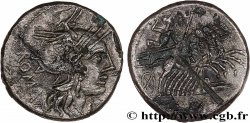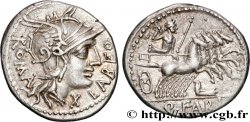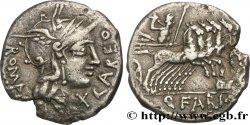v41_0362 - FABIA Denier
MONNAIES 41 (2009)
Starting price : 120.00 €
Estimate : 180.00 €
unsold lot
Starting price : 120.00 €
Estimate : 180.00 €
unsold lot
Type : Denier
Date: 124 AC.
Mint name / Town : Rome ou Italie
Metal : silver
Millesimal fineness : 950 ‰
Diameter : 19, mm
Orientation dies : 1 h.
Weight : 3,89 g.
Coments on the condition:
Exemplaire sur un flan ovale et bien centré des deux côtés. Beau portrait, bien venu à la frappe. Joli revers avec une usure régulière. Jolie patine de collection ancienne avec des reflets mordorés
Catalogue references :
Predigree :
Cet exemplaire provient de la collection M. R. de Dijon
Obverse
Obverse legend : ROMA/ LABEO.
Obverse description : Tête casquée de Rome à droite ; sous le menton, marque de valeur, X.
Obverse translation : “Roma/ Labeo”, (Rome/ Labeo).
Reverse
Reverse legend : Q. FABI À L’EXERGUE.
Reverse description : Jupiter dans un quadrige galopant à droite tenant un foudre de la main droite et un long sceptre de la main gauche ; au-dessous du cartouche, un rostre de navire tourné à gauche.
Reverse translation : “Quintus Fabius”, (Quintus Fabius).
Commentary
Pour ce type, M. Crawford a relevé une estimation de 300 coins de droit et de 375 coins de revers. Sur cet exemplaire, le rostre est stylisé. Frappé en 124 avant J.-C. à un moment où les Romains sont en guerre contre les Allobroges et les Arvernes, ce type de denier a pu circuler en Gaule, mais ne semble pas y avoir été imité.
For this type, Mr. Crawford noted an estimate of 300 right dies and 375 reverse dies. On this example, the rostrum is stylized. Minted in 124 BC at a time when the Romans were at war against the Allobroges and the Arverni, this type of denarius may have circulated in Gaul, but does not seem to have been imitated there.
For this type, Mr. Crawford noted an estimate of 300 right dies and 375 reverse dies. On this example, the rostrum is stylized. Minted in 124 BC at a time when the Romans were at war against the Allobroges and the Arverni, this type of denarius may have circulated in Gaul, but does not seem to have been imitated there.







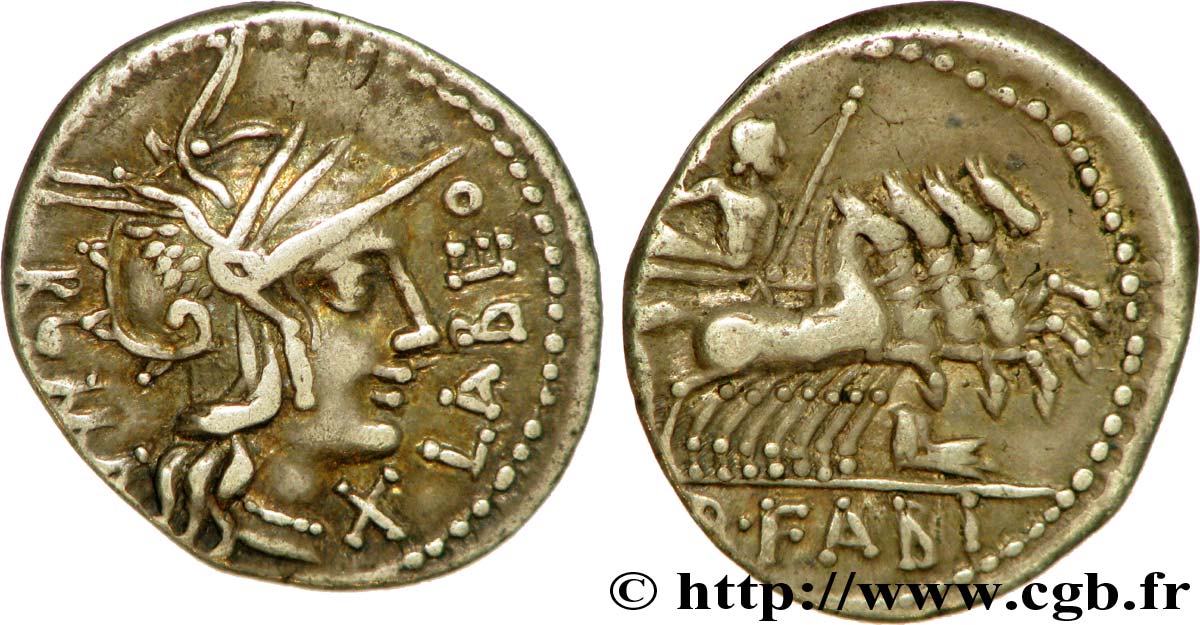
 Report a mistake
Report a mistake Print the page
Print the page Share my selection
Share my selection Ask a question
Ask a question Consign / sell
Consign / sell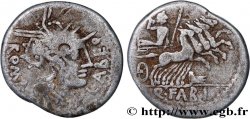
 Full data
Full data